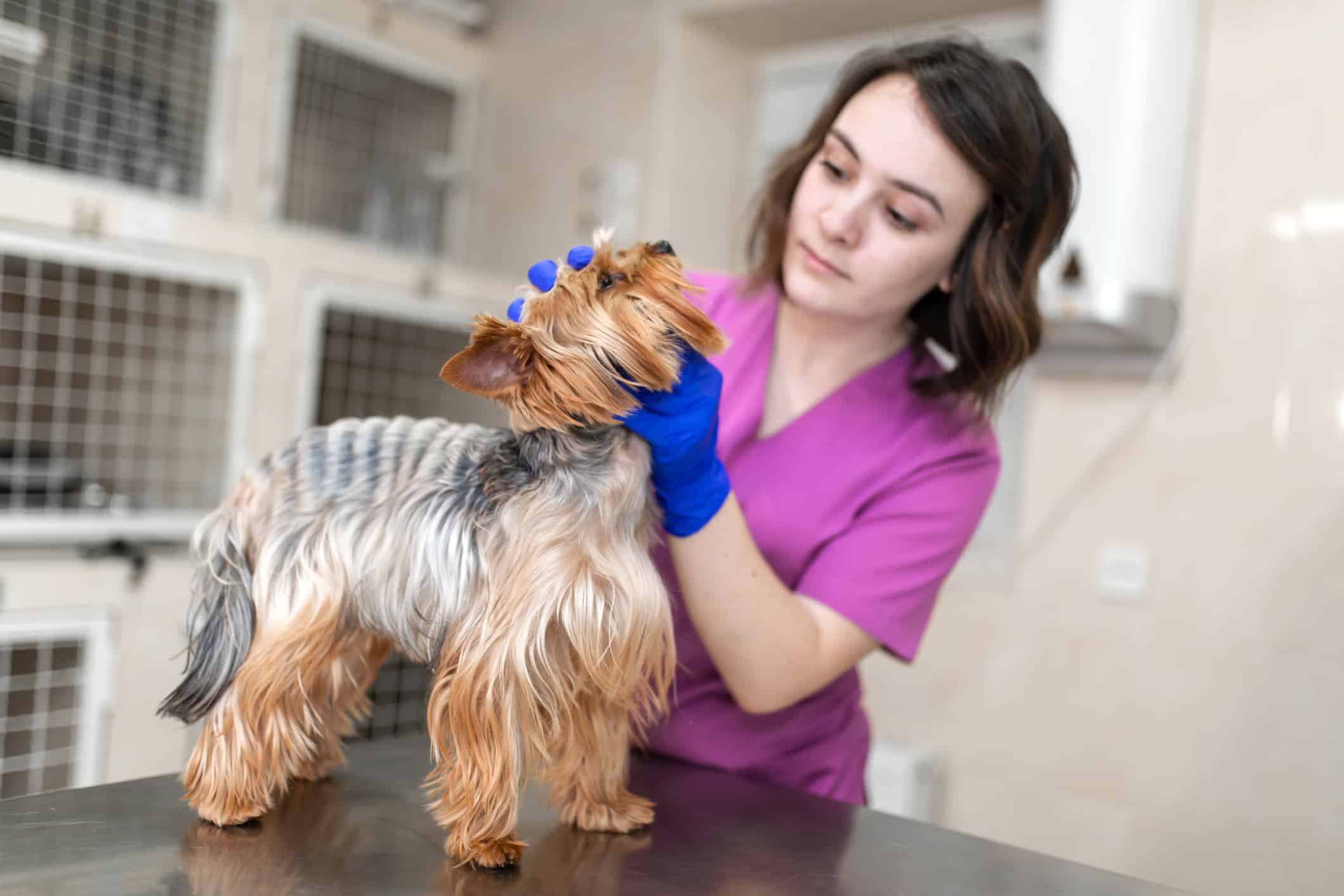Few people like visiting the doctor. Often, these feelings multiply manifold when describing your dog. Man’s best friend cannot understand why they are brought to a place where they get poked and prodded. That said, vet visits are an essential part of their care often determining future health and long-term longevity. Therefore, knowing 11 vet preparation tips proves important to ensuring your dog passes through these crucial occasions as smoothly as possible.
Perform a Mock Examination
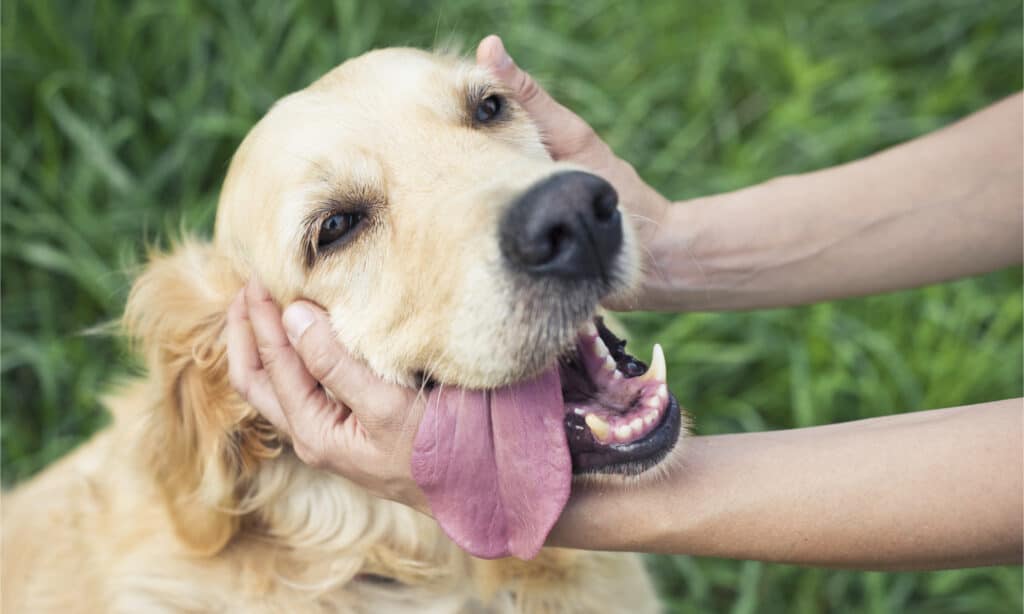
Petting your dog’s ears, face, paws, and tail before a vet visit often makes them less anxious when your vet checks these vital areas.
©archimede/Shutterstock.com
Performing a mock examination sounds complicated. However, veterinary care professionals stress that this activity involves petting commonly examined parts of a dog’s body such as its ears, mouth, paws, and tail. Vets typically examine these bodily regions. Therefore, if owners pet them, chances are the dog will show less fear when the vet touches such areas.
Socialize Your Dog with Other Dogs

Properly socialized dogs are less likely to experience anxiety or engage in mischief while visiting the vet.
©Marina Vedernikova/iStock via Getty Images
Pet parents must remember that dogs are still animals. Ergo, improperly socialized creatures stand at a greater risk of interacting poorly with other animals and human strangers. Therefore, socialization proves crucial. By simply taking your dog to a local dog park or allowing your furry friend to interact with your neighbor’s dog, their social skills often increase significantly.
Gather the Appropriate Information

Before visiting the vet, it is important to gather papers containing important information about your dog’s health.
©Wirestock Creators/Shutterstock.com
Your dog’s vet visit will proceed much smoother if you gather and bring all of the pet’s health-related papers. These documents should provide information regarding:
- The medications your dog takes regularly
- Their current diet
- Any changes to their eating or bowel and bladder habits
- Any changes in their behavior
- Your dog’s vaccination history
The more your vet knows about your dog, the quicker and easier the examination process will be thus limiting your dog’s chances of developing potentially troubling anxiety.
Pack an Essentials Bag
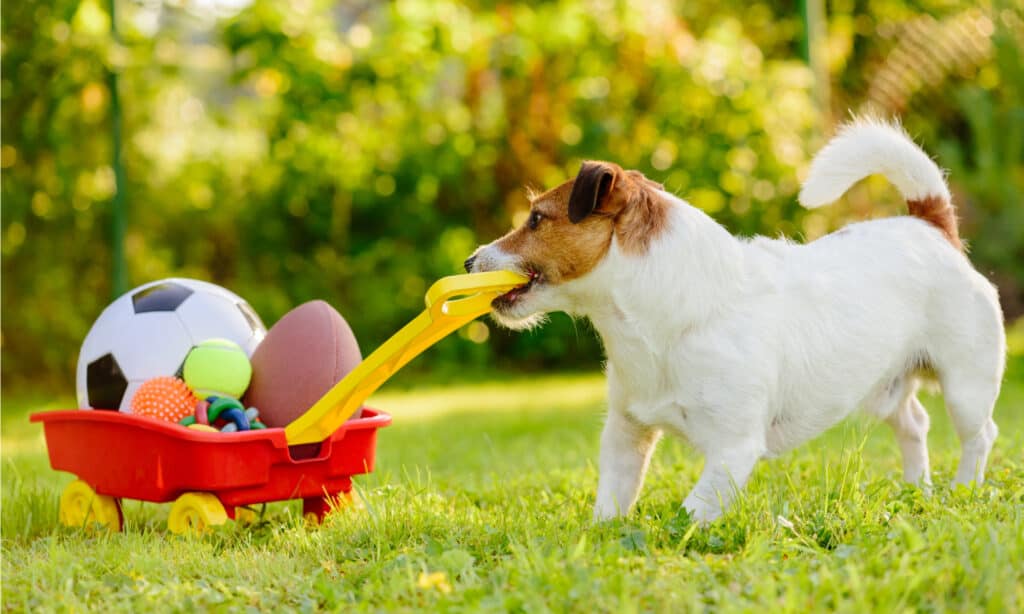
An essentials bag containing items like your dog’s favorite toys provides comfort by enabling them to interact with familiar objects.
©alexei_tm/Shutterstock.com
Just before departing, you are strongly encouraged to pack an essentials bag equipped with your dog’s favorite toys, the blanket and dog bed they sleep on (space permitting), and a bag of treats. Being surrounded by items your dog loves brings them comfort and reduces their stress levels.
Make Sure Your Dog Stays Hydrated
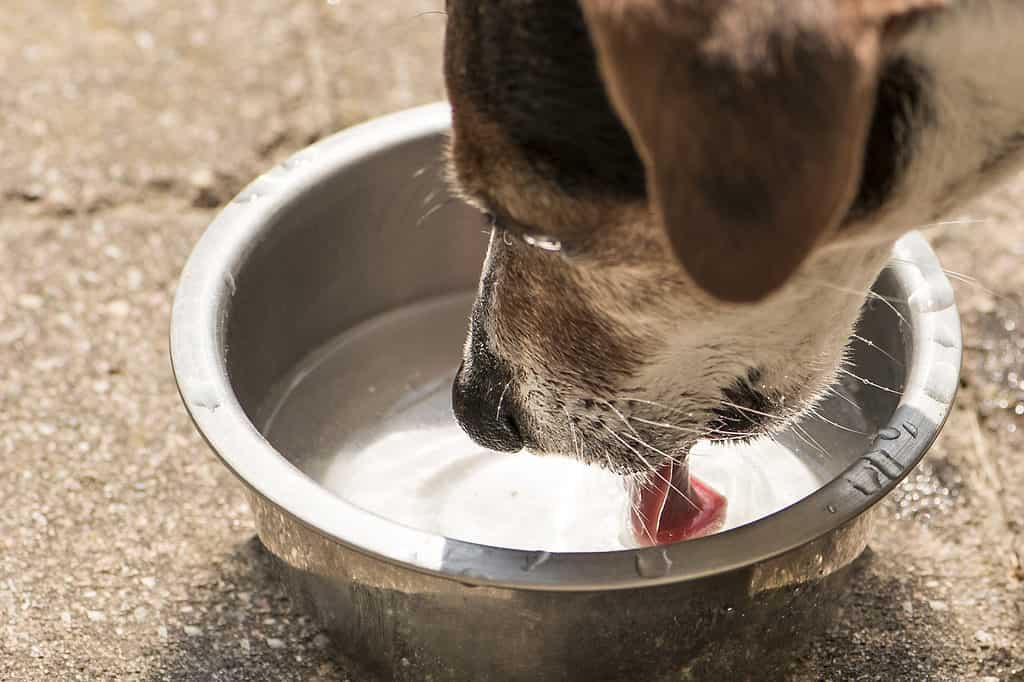
Water plays a crucial role in helping your dog maintain calm.
©iStock.com/K_Thalhofer
Proper hydration plays a critical role. Nervousness often causes your dog to pant. This action leads to water depletion inside their bodies. Over time, this results in dehydration. Even mild cases may bring forth increased anxiety. Significant cases might cause more serious symptoms and the worsening of existing health issues. Therefore, make sure your dog drinks plenty of water in the hours before a vet appointment.
Contact the Vet’s Office Ahead of Time
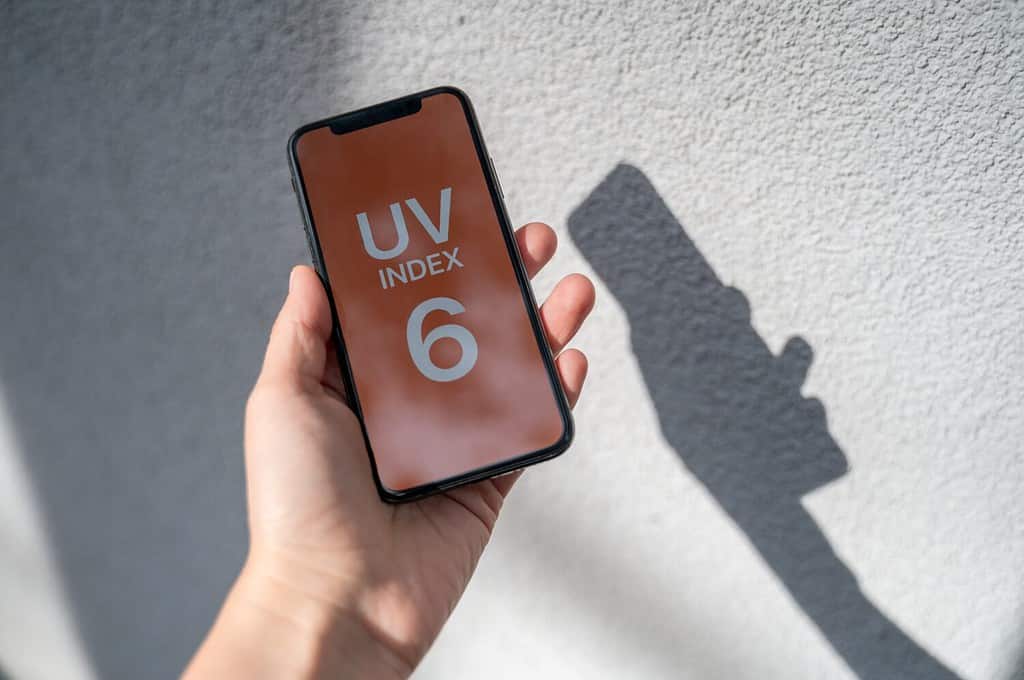
If your dog is not well-socialized or the especially nervous type, calling ahead and making special arrangements is strongly advised.
©Molenira/Shutterstock.com
Dogs that do not get along well with their fellow canines or suffer from tremendous anxiety often do best when no one else is around. Therefore, if either or both cases apply to your best friend, call the vet’s office ahead of time and schedule appointments well before or after any others. Typically, veterinary office personnel understand such situations exist and will be willing to work with you in the interest of maintaining a harmonious environment.
Recognize Stress Signs
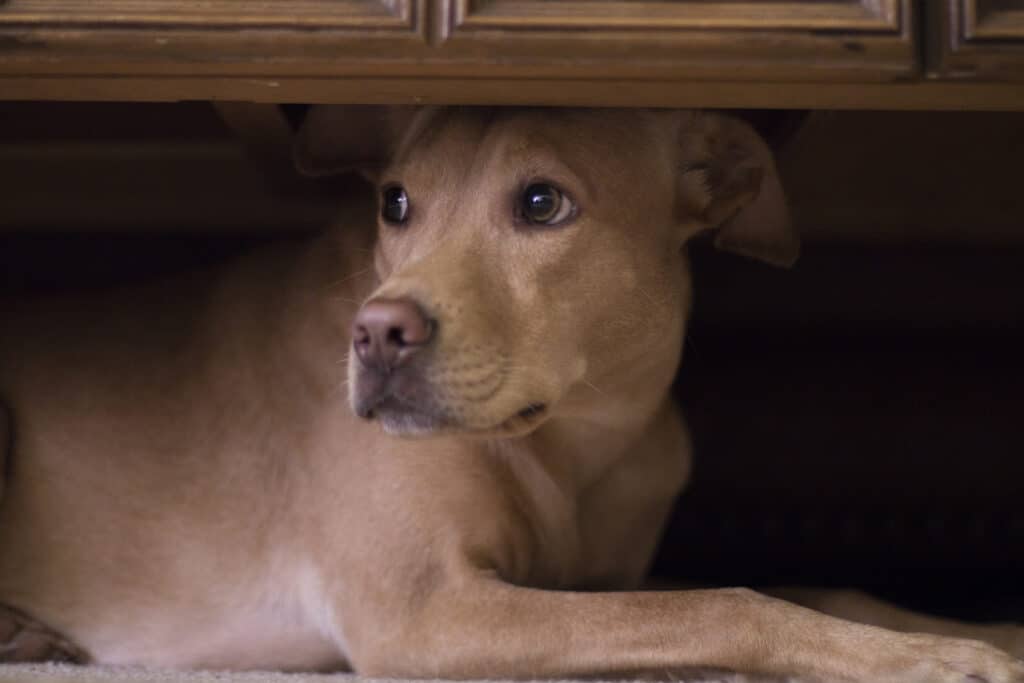
©Patrick H/Shutterstock.com
Nervous dogs often display certain symptoms suggesting that they are anxious like hiding.
Upon your arrival at the vet, look out for any stress signs in your dog. Specific examples include:
- Pacing back and forth
- Hiding
- Increased yawning
- Salivating
- Lip licking
- Increased sniffing
- Excessive talking or barking
If you notice any of these concerns, take proactive steps to combat the anxiousness by praising your dog or rewarding them with goodies like treats.
Consider Medications
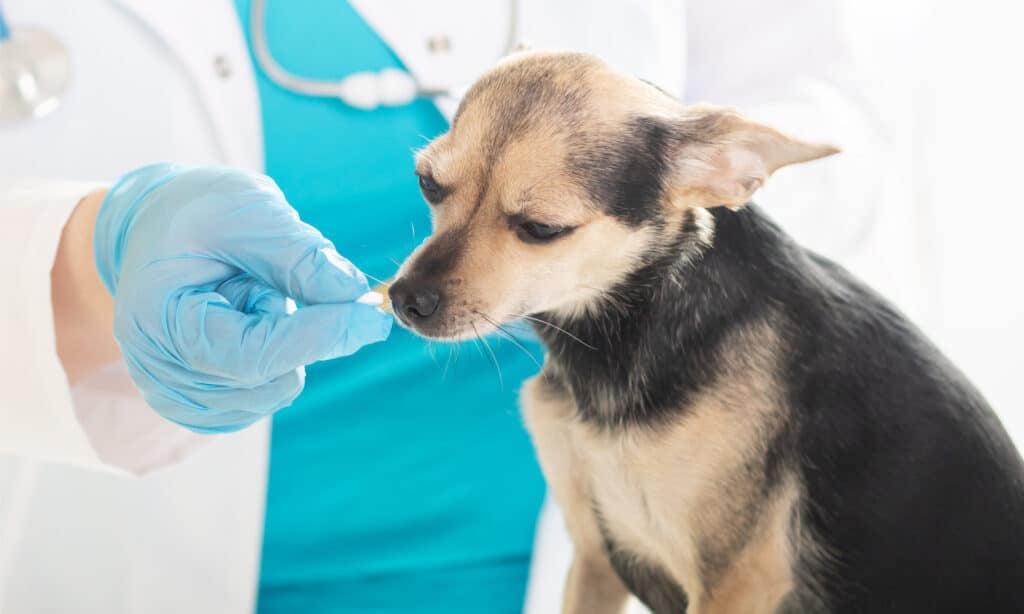
Severely anxious dogs might require anti-anxiety medications before a vet visit
©iStock.com/Yana Tikhonova
In cases where typical tension-breaking or easing methods fail, your dog might need anti-anxiety medications. That said, these substances should never be administered without first consulting your vet. Certain drugs carry side effects and may not be suitable for dogs diagnosed with certain medical conditions.
Remain Calm

Pet parents must remain calm because dogs often pick up on their owner’s emotions.
©Asmiana/Shutterstock.com
Vet visits require planning, often prove stressful, and are usually costly. That said, you must not let the tension get to you. If you act nervous, your dog will follow your lead.
Give Your Dog Exercise
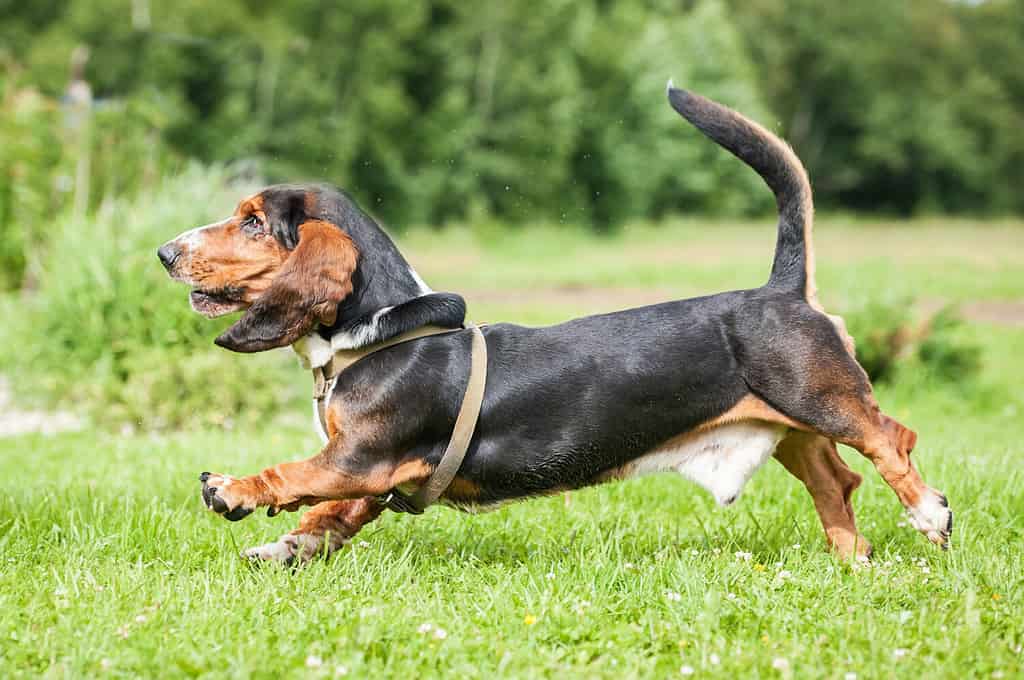
Exercise is a productive way for your dog to release tension.
©Rita_Kochmarjova/Shutterstock.com
Before you leave for the vet or just ahead of entering the office, make sure your dog exercises. A quick run or a game of tug-o-war provides the perfect opportunity for your dog to burn off potentially problematic anxiety.
Play Music

Music often calms a tense dog’s nerves.
©iStock.com/Giorez
In many ways, music possesses the same calming effect on dogs that it does on humans. Melodic sounds cause a chemical reaction resulting in calm. Therefore, turn up the car radio en route to the vet’s office.
Summary of 11 Vet Preparation Tips
| Tip | Calming Impact on Dogs |
|---|---|
| Perform a mock exam | Prepares dogs for actions the vet will take |
| Socialize your dog | Makes your dog more trusting and friendly around other animals and people |
| Gather the appropriate information | Speeds up the examination process |
| Pack an essentials bag | Allows you to bring familiar objects providing your dog a level of comfort |
| Keep your dog hydrated | Prevents anxiety from worsening |
| Contact the vet’s office ahead of time | Lessens the chance of conflict with other dogs |
| Recognize stress signs | Enables you to curb anxiety episodes before they become problematic |
| Consider medications | Provides chemically-induced calm |
| Remain calm | Provides your dog reassurance |
| Give your dog exercise | Allows your dog to release tension |
| Play music | Provides chemically-induced calm |
Thank you for reading! Have some feedback for us? Contact the AZ Animals editorial team.

